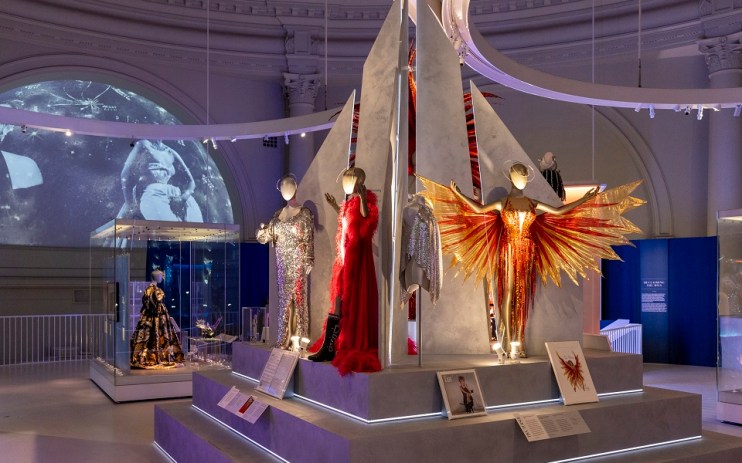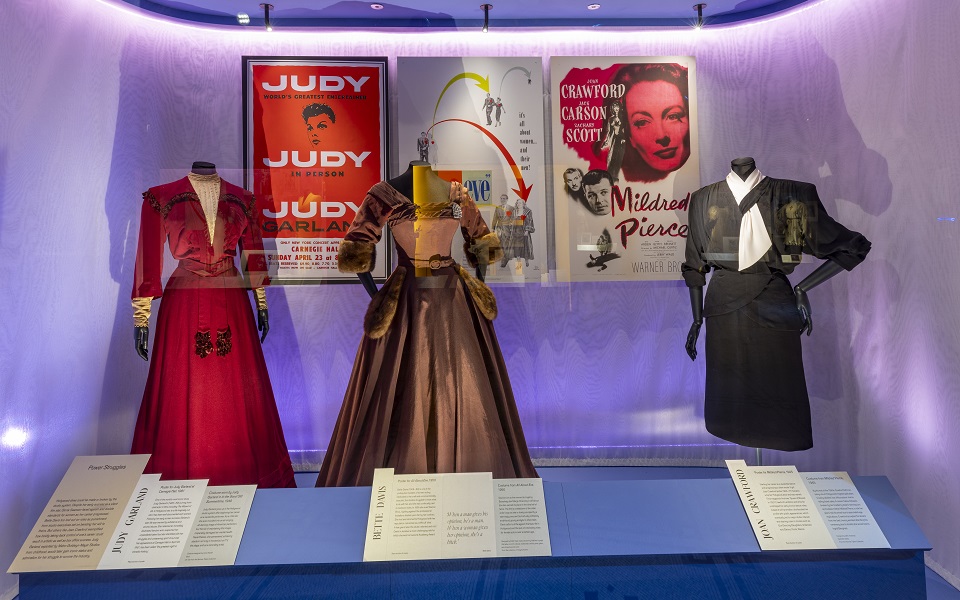Diva exhibition at the V&A, review: a serious celebration of icons
If the word ‘diva’ still holds any negative connotations, then those notions are scrapped wholeheartedly by the V&A’s new Diva exhibition, the first of its kind in the world. A kaleidoscopic collection of outfits that has taken five years to bring together, the exhibition subverts the idea that a diva is someone who demands bottles of champagne on demand. They are instead powerful and influential people – often women but sometimes men – who have often overcome hardship to become icons to communities, particularly oppressed ones like the LGBTQ community.
You enter into an intimate and darkened space, where crushed velvet in royal blue cloaks every corner, theatrically immersing us in the world of the diva. The first item is a floor-length red velvet dress once worn by Maria Callas for one of her defining performances. One of the most famous opera singers of the 20th century, Callas is one clear definition of the diva. If it feels like a nebulous concept then in this instance the diva is someone defined by their style and talent.
Under the cover of the blue velvet throws, we also come face to face with one of Elizabeth Taylor’s original Cleopatra costumes, and perfectly-preserved outfits worn by Joan Crawford in Mildred Pierce, Joan Crawford’s regal frock from her 1963 Carnegie Hall performance and Mae West’s I’m No Angel outfit, bedecked in shimmering gold leaf patterns. Above it words from the film define another type of diva, one that subverts traditional notions of feminine behaviour. It reads: “When I’m good I’m very good – but when I’m bad I’m better.”
But if the divas were to come here, they’d play upstairs. There, the firefly dress worn by Tina Turner – later copied by Beyonce – is attention-grabbing on a central podium alongside other Turner dresses and equally elaborate pieces worn by Cher. In the corner, Elton John’s 1997 50th birthday party outfit, the Recency, Louis XIV-inspired fluffy white number, has likely commanded the most column inches and is most memorable. There are beautiful frocks worn by Rihanna, one to conceal her pregnancy in 2021, gold sparkly numbers worn by Whitney Houston and a little black dress Edith Piaf once sang in.
Most exciting are the dazzling outfits upstairs when the exhibition moves broadly into a more modern era. 250 objects are divided into twelve “scenes,” with five or six divas per scene, with themed sections like ‘I Want To Break Free’ touching on the empowerment and oppression faced by divas, as well as their external factors that shaped them – such as the queer community’s adoration – and their life stories.
The ‘scenes’ can feel hard to follow, with the layout of cabinets not always making it immediately clear which physical items are grouped together. Perhaps a more straightforward timeline of divas by decade – an extension of the broader chronological feel of the exhibition, with divas from the early 20th century downstairs – could have been easier to follow. It means that the exhibition’s themes can feel hard to string together, but the sheer weight of stunning historical outfits, which took five years to gather together into one space, are worth the visit alone.
Diva runs at the V&A until April 2024; vam.ac.uk


